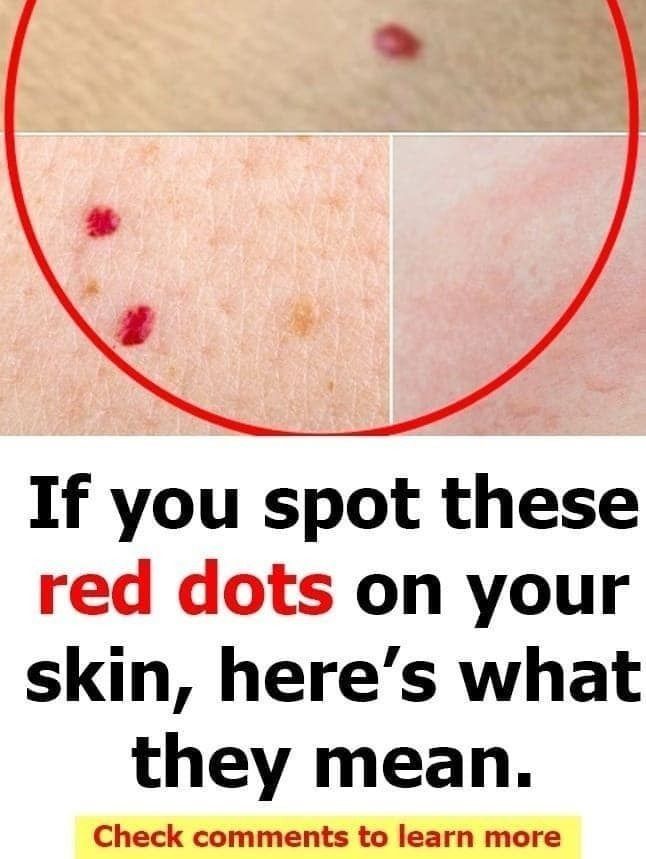4. Rash or Allergic Reaction
What They Look Like: Raised, itchy, or blotchy red spots that may appear suddenly.
Causes:
- Allergies to food, medication, or environmental factors (e.g., pollen, chemicals).
- Contact dermatitis caused by irritants like soaps, detergents, or plants (e.g., poison ivy).
- Viral infections like measles, chickenpox, or rubella.
When to Worry: If the rash is accompanied by difficulty breathing, swelling of the face or throat, or widespread hives, seek emergency care, as this could indicate a severe allergic reaction (anaphylaxis).
5. Heat Rash or Prickly Heat
What They Look Like: Tiny red bumps or blisters, often appearing in areas prone to sweating (e.g., neck, armpits, groin).
Causes:
- Blocked sweat ducts due to hot, humid weather or tight clothing.
- Common in infants but can affect adults during heatwaves or intense physical activity.
When to Worry: Heat rash typically resolves on its own with cooling and proper hygiene. However, if the bumps become infected (pus-filled, swollen, or painful), see a doctor for treatment.
6. Keratosis Pilaris: “Chicken Skin” Bumps
What They Look Like: Small, rough red or flesh-colored bumps, often on the upper arms, thighs, or cheeks.
Causes:
- Buildup of keratin, a protein that clogs hair follicles.
- Often linked to dry skin, genetics, or hormonal changes.
When to Worry: Keratosis pilaris is harmless and doesn’t require medical intervention. Moisturizing regularly and using exfoliating products can improve its appearance.
7. Bleeding Disorders or Blood Vessel Issues
What They Look Like: Larger red splotches or patches that may resemble bruises.
Causes:
- Conditions like vasculitis (inflammation of blood vessels) or purpura (bleeding under the skin).
- Autoimmune diseases like lupus or rheumatoid arthritis.
- Vitamin deficiencies (e.g., vitamin C or K).
When to Worry: If red dots persist, grow larger, or are accompanied by joint pain, fatigue, or unusual bleeding, visit a healthcare professional for further evaluation.
8. Insect Bites or Stings
What They Look Like: Raised, itchy red dots or welts, often with a visible bite mark.
Causes:
- Mosquitoes, fleas, bedbugs, or other insects.
- Some individuals may experience allergic reactions to bites.
When to Worry: Most insect bites resolve within a few days. However, if you develop signs of infection (increased redness, warmth, pus) or systemic symptoms like fever or difficulty breathing, seek medical attention promptly.
9. Rosacea: Persistent Redness
What They Look Like: Persistent redness with visible blood vessels, sometimes accompanied by acne-like bumps.
Causes:
- A chronic skin condition triggered by stress, alcohol, spicy foods, or extreme temperatures.
- More common in fair-skinned individuals.
When to Worry: While rosacea isn’t dangerous, it can worsen without treatment. Consult a dermatologist for management options, including topical creams or laser therapy.
10. Cancerous Lesions (Rare but Serious)
What They Look Like: Irregularly shaped red dots or patches that may itch, bleed, or scab over time.
Causes:
- Skin cancer types like basal cell carcinoma, squamous cell carcinoma, or melanoma.
- Prolonged sun exposure is a major risk factor.
When to Worry: Any new or changing lesion should be evaluated by a dermatologist. Early detection significantly improves outcomes for skin cancer treatment.
When Should You See a Doctor?
While many red dots on the skin are harmless, certain warning signs warrant medical attention:
- Sudden appearance of numerous red dots.
- Spreading or enlarging lesions.
- Pain, itching, or bleeding associated with the dots.
- Accompanying symptoms like fever, fatigue, or unexplained weight loss.
Prevention Tips
- Protect your skin from excessive sun exposure by wearing sunscreen and protective clothing.
- Avoid scratching or picking at your skin to prevent irritation or infection.
- Maintain good hygiene and moisturize regularly to keep your skin healthy.
- Stay hydrated and eat a balanced diet rich in vitamins and minerals to support skin health.
Conclusion: Don’t Panic, But Stay Informed
Red dots on your skin are often harmless and temporary, but understanding their potential causes can help you identify when something more serious might be at play. Pay attention to how the dots look, feel, and evolve over time. If you’re ever unsure, don’t hesitate to consult a healthcare professional. After all, your skin is a reflection of your overall health—it’s worth taking care of!

